
Nov 30 2022
9 min read


Aug
Picture this: You’re strolling along the cobblestoned streets of Paris, and the smell of freshly baked croissants guides you to a quaint cafe with outdoor seating. Sitting down, you feel a tiny drop of water land on your nose. A storm is brewing.
Scrambling for cover, you look around, only to see a huge gif of Gerard Butler from 300 shielding himself from the downpour. And right below a convincing call-to-action asking viewers to sign up with Netflix.

When the streaming service first launched in France, it pulled all the stops with its GIF campaign—an initiative that generated a whopping 43% jump in brand awareness. They used contextual marketing, where GIFs from Netflix movies and shows would play depending on what was going on in the surrounding environment.
This is just one example of how brands apply corporate communication to boost visibility and supercharge their customer acquisition strategy. If you’re still wondering what corporate communication is, we’re going to break it down for you in this article. Let’s cut to the chase!
A short e-mail to employees wishing them a happy holiday. Company announcements. Pesky ads that play before every YouTube video. Sparkly brochures laid out on doorsteps, advertising the local grocery store
While all the above content pieces fall under different categories, they join forces under a larger umbrella—corporate communication.
In a nutshell, the term refers to activities organizations undertake to interact with various stakeholders, helping brands build their image, especially when consistent messaging is in the mix.
You’ll notice two flavors of corporate communication: internal and external.
When communication occurs between management and employees within an organization, it falls under internal communication.Modern tools of communication have revolutionized the way organizations communicate internally. Effective internal communication promotes company culture and retains top talent. A few examples include:
Leadership communication
Good leaders can empower employees to perform better. But an impersonal and dry e-mail from the company CEO won’t create the same impact as an in-person meetup or an interactive video about company updates and progress.
When corporate communication teams encourage senior management to communicate better with employees, it creates a welcoming atmosphere that inspires people to do their best work.
Accenture is a great case in point. Whenever a new joinee is onboarded in the organization, they’re directed to a welcome video from the CEO. This year, it was Julie Sweet who did the talking.
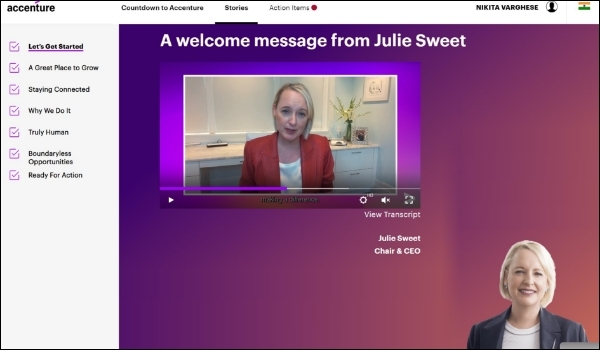
Crisis communication
When the Covid-19 pandemic first hit, companies worldwide went into panic mode. This meant laying off employees, closing office premises, and providing facilities to help employees weather the crisis.
Being such a sensitive topic, how did companies know what to say, or more importantly, when to say it? The answer lies in the meticulous planning of the corporate comms department.
When tragedy strikes, organizations quickly regroup with a crisis communication strategy for damage control. These strategies are often already in place, so no one is caught unaware.
For example, Cisco has designed a comprehensive notification system that can be implemented during emergencies. With it, HR professionals can update the rosters of those affected and instantly communicate with them to see if they need any support.
Suggested Reading: Tips to design your organization's internal communication strategies
Think of external communication as messaging that contributes to an organization’s public image. It comprises all corporate communication strategies with external audiences like customers, investors, suppliers, and the wider community.
External communication doesn’t always have to be a formal announcement of quarterly results. Instead, it takes various forms like:
Social media
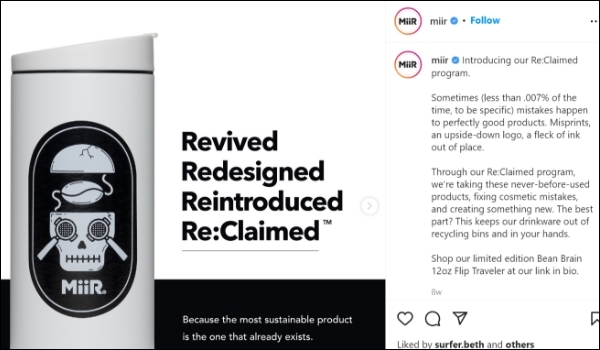
Platforms like Facebook, Twitter, Instagram, and Linkedin have taken the corporate communications world by storm. Companies have shifted from relying solely on press releases and ad companies to spread brand awareness to a cheaper and more effective alternative— social media.
This change in strategy has helped distribute information to a broad audience in a cost-effective way. Say you want to create awareness about a new product you’re offering. All you need to do is upload a post about it on social media channels frequented by your target audience. And voila! You’ll get a host of sign-ups in no time.
Press releases
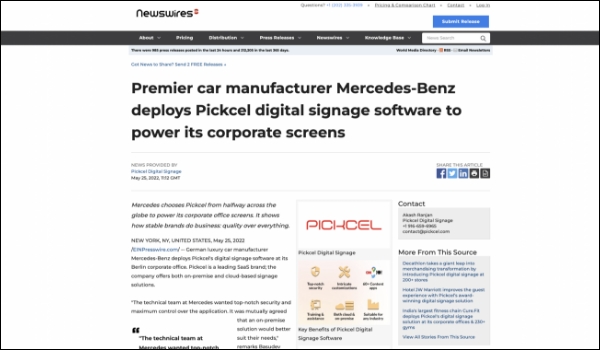
Imagine being able to shape the public perception of your company. With press releases, it’s entirely possible. So, here’s how it works: You create a document detailing new brand developments and send it across to journalists in your network. Depending on your pitch, this story could get carried in the newspaper or other online publications, thus building top-of-mind recall for your brand.

A well-planned strategy is essential for a company to communicate effectively when met with a crisis or change. A successful corporate communication strategy hinges on three key elements—planning, execution, and evaluation.
Focusing on them will help you drum up higher revenues, create a lasting impression on audiences and improve employee retention by leaps and bounds. Here are five steps to help you create a winning strategy that paves the way for organizational success:
Before creating content, zero in on the stakeholders you want to communicate with. They could be employees, customers, senior management, or investors. If you don’t clearly define your target audience, messaging will fall flat, leading to lower engagement. The worst part? It eats into your team’s budget, giving them dwindling resources to work with.
There are several factors to consider while choosing a target audience, including psychographics, demographics, income level, and location. Conduct in-depth market research to analyze your target group’s psyche.
Though you can make do with secondary research, back it up with user interviews and surveys for better results.
Based on your findings, segment your audience into broad categories to gauge each group’s pain points, motivations, and desires.
Planning a strategy without defining your objectives is like shooting in the dark. It never works out. While listing your goals, one thing to remember is to ensure they are specific, measurable, attainable, relevant, and time-bound. These are called SMART goals.
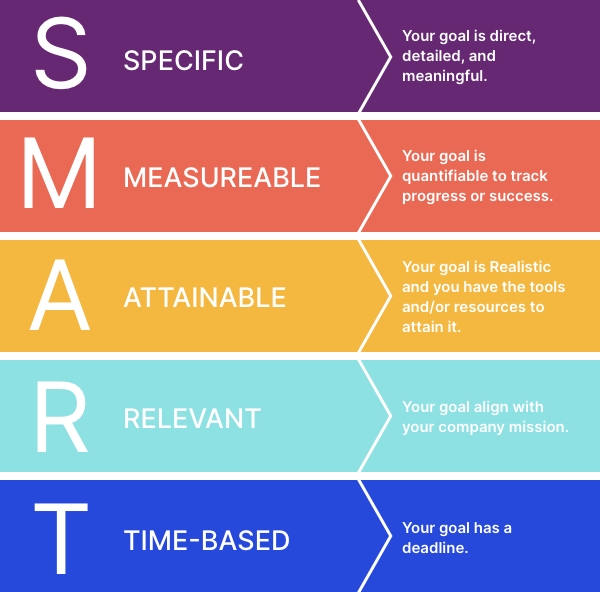
If you’re looking to work on your external communication strategy, with a focus on social media, your SMART goals could look like this:
Rack up 200 followers over 30 days with ads and sponsored posts on Instagram
Increase engagement rate by 5% to drive brand awareness over three months
Triple the number of Twitter followers within four months
Once you’ve listed your objectives, evaluate whether they are tied to your company’s vision and long-term goals. This will help you create a cohesive plan.
Mixed messages can sow seeds of distrust in your brand. And we don’t want that. To build a loyal following, ensure you decide on a consistent message and tone of voice to follow while communicating with your audience. You’ll need to consider several avenues, from corporate signage to newsletter and web copy.
While brainstorming a messaging strategy, think from the perspective of your target audience. What kind of communication will they connect with? You could use a formal and professional tone of voice or spice things up with something casual and quirky. Before you jump the gun and start distribution, consult with all the company’s internal stakeholders to arrive at an approach everyone is happy with.
The right messaging can help you grow your company to unprecedented heights. Look at how Nike was able to establish itself as a key player in the sports apparel market by communicating a simple message— Just do it. The campaign’s consistency across channels helped the brand boost its presence in the North American market from 18% to 43% between 1988 and 1998.
Content distribution is just as—if not more—important than ideation. In this step, you’ll list the tools and platforms needed to execute your ideas. These can vary depending on your message and target audience.
To reach the public, go for paid media channels like social media ads and sponsored content. To communicate with employees and internal stakeholders, owned media like corporate newsletters and case studies would prove more effective.
Another aspect of distribution is frequency. How often are you planning to communicate with your audience? Create a content calendar that clearly defines what kind of content you’re posting and when. Be mindful of content fatigue. If you post too often, it comes across as spammy and lowers brand trust considerably. Tools like Airtable, Notion, and Hubspot can help you streamline this process.
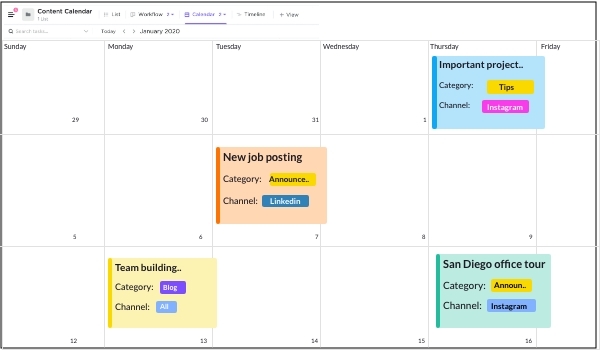
You can’t just execute a corporate comms strategy and call it a day. To get good results, it’s important to keep tracking the outcome of your efforts to understand whether you’re targeting the right audience, creating content that works for your company, and using the proper distribution channels.
Develop in-depth reports of how your strategy fared in each quarter based on your findings. Use the SMART goals to see if you’re going in the right direction. If you haven’t met your goals, playback your strategy to identify loopholes and areas for improvement. This will help you optimize further for better results.
Unlike the previous examples, digital signage can be used effectively for both internal and external communication. Say you’ve noticed a significant dip in employee engagement. All you need to do is set up a digital signage board that displays key announcements for the quarter, meeting schedules, or even a gamified leader-board with top-performing departments.
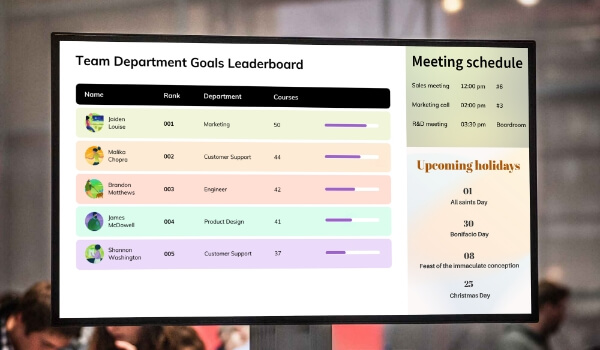
To connect with external target audiences, you can use social walls. These are digital signage boards that showcase your company’s social media campaigns. You can also use them in live events to engage with participants and boost the reach of your event hashtag.
GoPro did a great job leveraging a social wall to enhance customer loyalty without spending a single penny. Wondering how? They simply uploaded videos and photos captured by their users on different platforms. Not only did this create a buzz among customers who got featured, but it also showed the public how great GoPro cameras are.
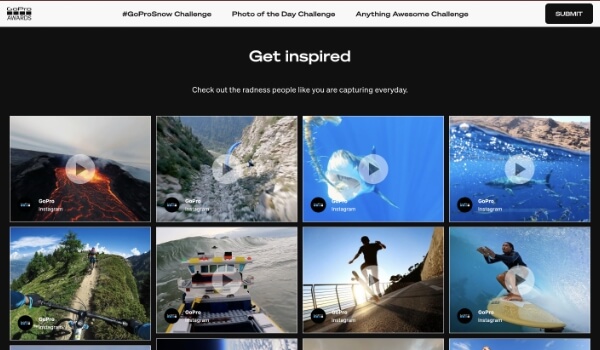
Fully-fledged corporate teams are non-negotiable in large organizations that are often under the full glare of media publicity. If you’re curious about which roles fit into the mold of corporate comms, here are ten popular ones you’ll need to consider while building a team of your own.
Entry-level
Communications Specialist
Media Relations Specialist
Public Relations Specialist
Mid-level:
Communications Manage
Media Relations Manager
Public Relations Manager
Senior-level:
Director of Communications
Director of Media Relations
Public Relations Director
Chief Communications Officer
Though the above roles have different prerequisites and responsibilities, they all call for a common set of skills—writing, presentation, public speaking, networking, critical thinking, and data analysis.
Conclusion
If you’re planning to dip your toe into corporate communication, brace yourself for long hours of brainstorming and research. With so many companies trying to differentiate themselves— either through company culture or a well-planned marketing mix—it’s important to go the extra mile while ideating your corporate comms strategy.
Thinking of ways to boost brand visibility and engagement? We’re happy to help you out. Click here for a quick consultation.
Take complete control of what you show on your digital signage & how you show it.
Start Free Trial Schedule My Demo
Nov 30 2022
9 min read

Nov 11 2022
8 min read

Oct 20 2022
5 min read

Sep 20 2022
12 min read